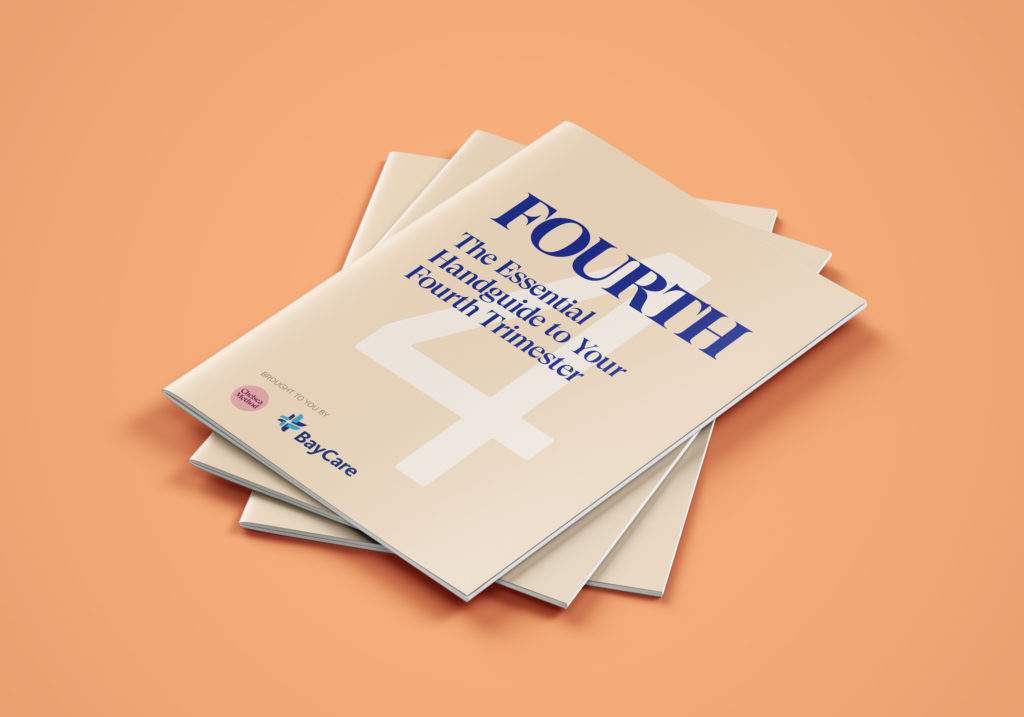For first-time moms, the unknowns of birth can be terrifying. So you prepare: You take birthing classes, read about ways to manage pain, and research your options.Then the baby comes, you survive, and then it’s over. Now what? You’re bleeding, leaking, swollen, and taking care of a baby in a strange new body. No one told you it would be quite like this.
It’s often the loneliest, most exhausting, and overwhelming time period in a mom’s life.
The first 12 weeks after giving birth are often called the fourth trimester. It’s a transitional time for the mom and the baby, both physically and emotionally. It’s also a time during which mothers get minimal care and attention. In fact, a quick Google search for “fourth trimester” yields results mostly about what happens in the baby’s development—not the mother’s! It’s often the loneliest, most exhausting, and overwhelming time period in a mom’s life. Unless you’re prepared, you may not get the support you need.

So what should you expect in your fourth trimester?
You still look pregnant. You might notice that immediately after giving birth you still have your baby belly … only deflated. This is completely normal! Your uterus remains large and takes six to eight weeks to shrink back to its original size.
You bleed—a lot. After birth (both vaginal and C-section) you’ll have vaginal bleeding and discharge known as lochia. This is how your body gets rid of the extra blood and tissue you needed to nourish your baby. Heavy bleeding with golf-ball-sized clots (or larger) are normal for the first couple of days, but the clot size should get smaller with time. Your bleeding also lightens with time but can last for four to six weeks, so make sure you have plenty of pads on hand!
You have period cramps. After birth, your uterus will start contracting to shrink back down to its original size. This can feel like heavy cramping and often occurs during breastfeeding. Don’t be concerned if your bleeding increases after the cramping. As your uterus contracts, you may shed more blood. Again, this process takes about six to eight weeks.
You have baby blues. Up to 80 percent of new moms feel sadness starting within a week after birth and lasting up to two weeks. This is caused by a massive hormone shift happening in your body and is completely normal. It’s good to prepare for this emotional change and inform your support partner or team.
Your boobs are huge. Once your milk comes in, your breasts will double or triple in size overnight. You may find that the milk fills all the way up to your collarbones and your boobs are as hard as a rock. This can be highly uncomfortable and breastfeeding or pumping is the best way to relieve this discomfort!
It’s good to prepare for this emotional change and inform your support partner or team.
Your nipples have seen better days. Your nipples have never received more attention, and this can lead to blood blisters, chafing, and cracks. We highly recommend nipple guards when you start out breastfeeding. They provide a protective layer so that your nipples can gently ease into their new role. Nipple creams are also very helpful for restoring sore nipples.
Going to the bathroom hurts. After a vaginal birth, your perineum (genital area) is going to feel swollen and overstretched, making bowel movements scary and difficult. Taking a stool softener and drinking a lot of water is important for keeping your stool soft. It’s important to avoid straining but you can use your breath—instead of pushing—to move the stool forward. Placing your feet up on a stool can also be helpful. If you’ve had a C-section, use a pillow to gently splint your scar in order to protect your abdomen. Use the perineal spray bottle on the area to clean, and then pat dry—don’t wipe.
It also may be difficult to start your urine stream after birth, especially if you’ve had an epidural. This should resolve on its own with time. To help, practice breathing on the toilet and give yourself time to relax to let the urine come naturally. Avoid bearing down or straining. Once the urine comes, it can sting and burn, especially if you have a tear. To help with the burning, fill your perineal bottle with lukewarm water and spray the perineum as you urinate. Make sure to spray the perineum again after you’re done and then pat dry, don’t wipe.

Hemorrhoids are just part of the process. If you’ve had a vaginal birth, you will have hemorrhoids, so be prepared! Hemorrhoids are swollen veins in the anus and typically resolve with time. Avoid bearing down or straining on the toilet as this can make them worse (this is harder than it seems postpartum). Cold witch-hazel pads placed on the anus and hemorrhoid cream can be helpful.
Your scars greatly limit your activity. If you’ve had a C-section or perineal tear, your scar will greatly limit your movement, so be prepared to ask for lots of help! With a perineal tear, it’s important to keep your legs close together for healing. This makes getting out of bed or off the couch very difficult! A C-section scar will make everything harder: rolling in bed, getting out of bed, walking, holding your baby, etc. Communicate with your partner or support team so they know how to help you out. Typically moms with C-sections start turning a corner around two to three weeks postpartum.
Better preparation leads to more realistic expectations and empowers you to set up a better support system for yourself.
As moms, we have to think beyond our birth. Many moms find the poor education and lack of access to care immediately postpartum to be as traumatic as the birth itself. Better preparation leads to more realistic expectations and empowers you to set up a better support system for yourself.
That’s why we built Chelsea Method, a video-based fourth trimester rehab program that guides new moms through postpartum topics like troubles on the toilet, returning to sex, and how to be successful with everyday mom tasks. And we’ve just launched a free book to help prepare for this whirlwind of a transition. Grab a copy for yourself or for a friend here.
Like this piece? Subscribe to our newsletter for real stories about women on their journey to motherhood.
